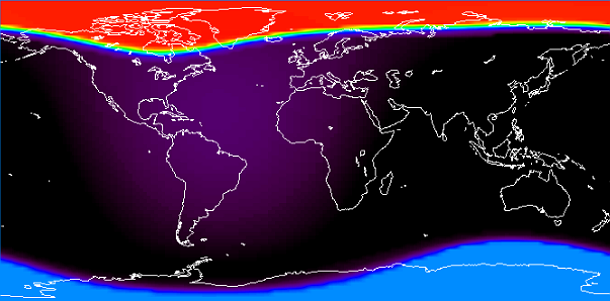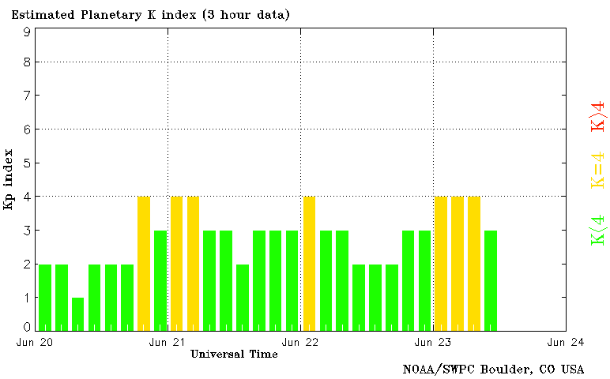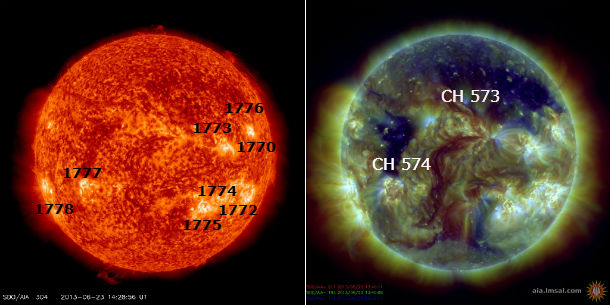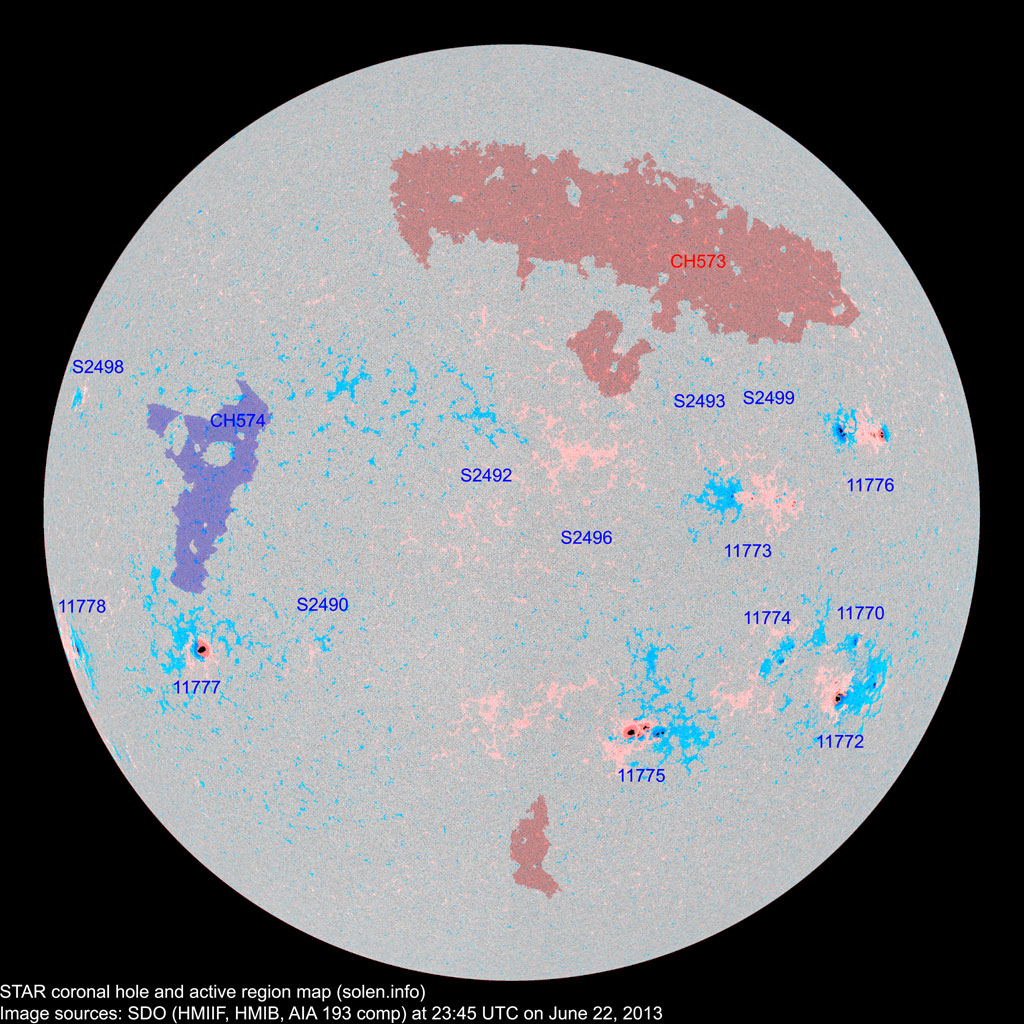Solar wind stream buffers Earth magnetic field

Earth is currently inside a solar wind stream flowing in from the massive coronal hole on the Sun's northern hemisphere. Elevated solar wind speed (above 600 km/s) combined with a south tilting Bz component of Interplanetary magnetic field (IMF) is responsible for slightly increased geomagnetic activity at high latitudes. Minor geomagnetic storming will be possible over the next 12-24 hours.
Geomagnetic activity remains below minor storm threshold levels reaching minor Kp=4 levels, just bellow G1 geomagnetic storm level. A chance for minor geomagnetic storming over the next 24 hours is possible due to effects of a glancing blow CME impact from the M2.9 solar flare on June 21, 2013.

Estimated Planetary K index graph shows geomagnetic levels from June 20 – June 23, 2013 (Credit: NOAA/SWPC)
A wide Coronal Mass Ejection (CME) was detected by CACTus on June 22, 2013 at 14:12 UTC. The CME had an angular width of 160 degrees and was seen as a halo CME by STEREO A. It was located at the farside so there is no threat to our planet.
The geomagnetic field is expected to be at quiet to active levels on June 23, unsettled to active levels on June 24 and quiet to unsettled levels on June 25, 2013. Protons greater than 10 Mev have a slight chance of crossing threshold in the days ahead.
.png)
There are currently 8 numbered active regions on the visible solar disk. Sunspots 1772, 1775 and 1776, located at the western limb, developed beta-gamma magnetic configuration and are capable of producing strong solar flare. Active Region 1775 remains the biggest region and the most probable source of possible flares. NOAA/SWPC forecasters estimate 40% chance of M-class and 5% chance of X-class solar flares in the next 24 hours.

Active region and coronal hole maps . SDO's AIA 304 and AIA 904 (Credit: Courtesy of NASA/SDO and the AIA, EVE, and HMI science teams)

UPDATE: 00:30 UTC, June 24, 2013
Proton levels reached the S1 (Minor) Level Radiation Storm threshold, most likely as continued effects from the M2.9 event on June 21, 2013. Some minor impacts on HF radio in the polar regions are possible at this level.

Satellite environmental plot (Credit: NOAA/SWPC)
NOAA/SWPC also issued R1 (Minor) Radio Blackout Alert. At this level weak or minor degradation of HF radio communication can occurr on sunlit side, with occasional loss of radio contact and degradation of low-frequency navigation signals for brief intervals.
Featured image: Global D Absortion map (Credit: NOAA/SWPC)

this solor storm will probly awake alot of Volcanoes around the world aswell.